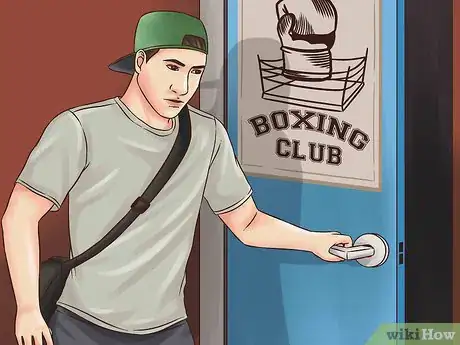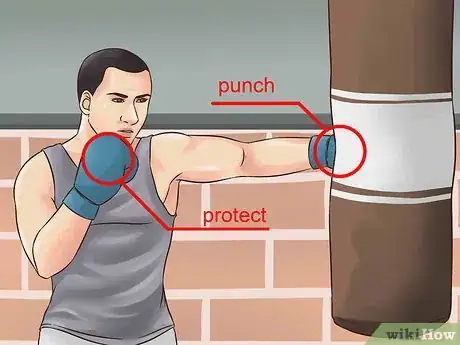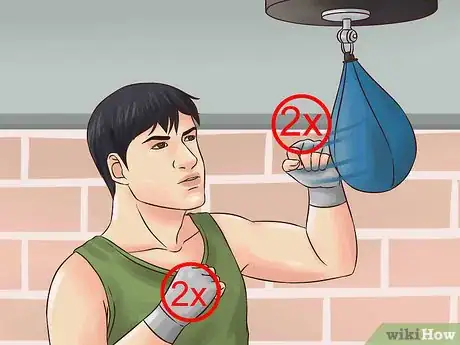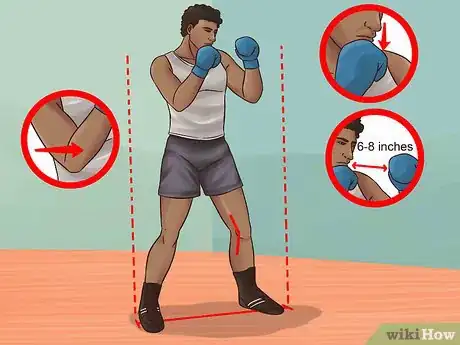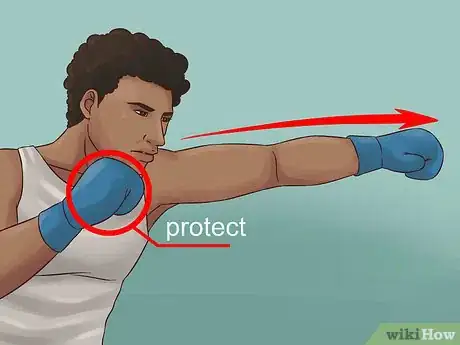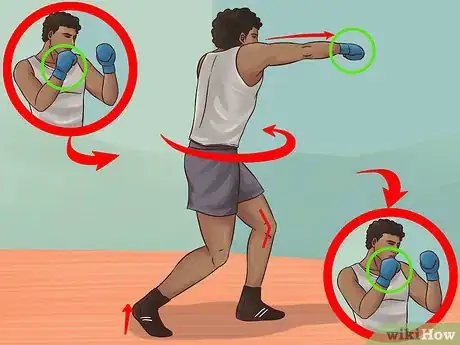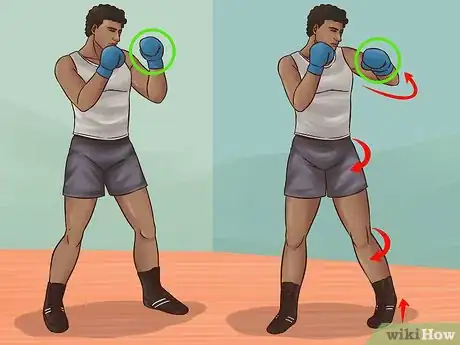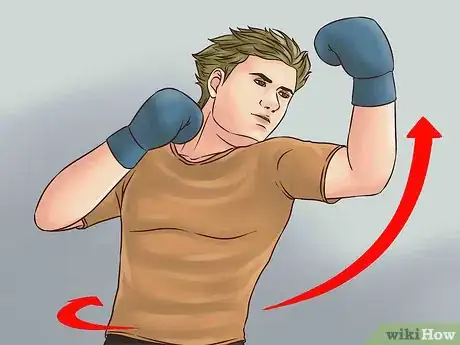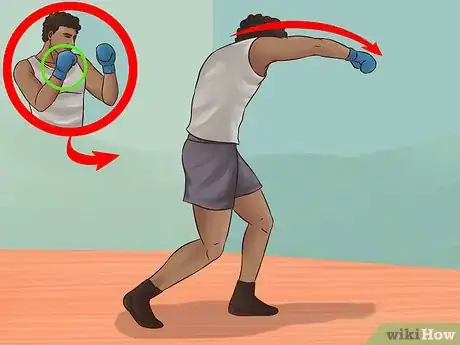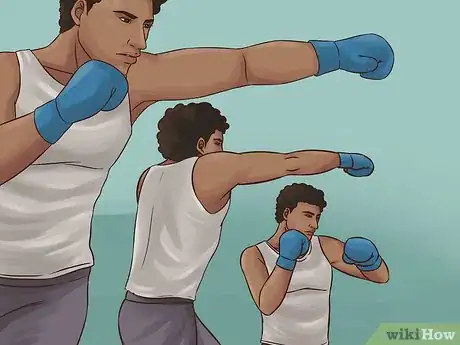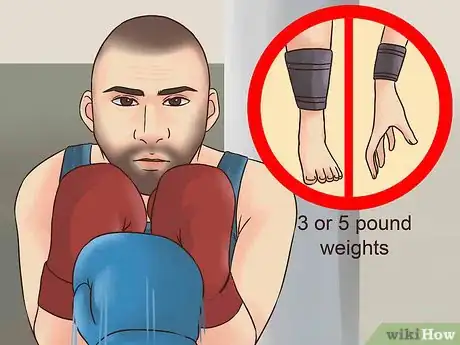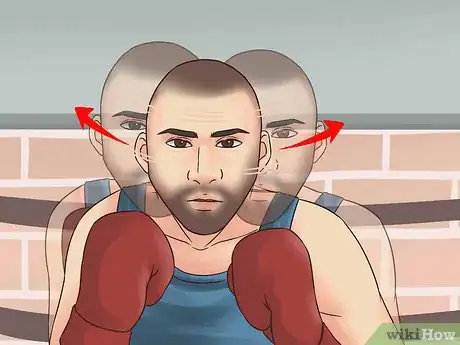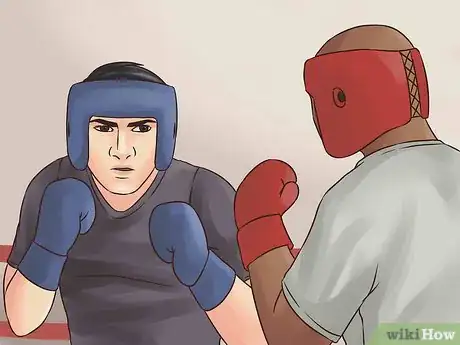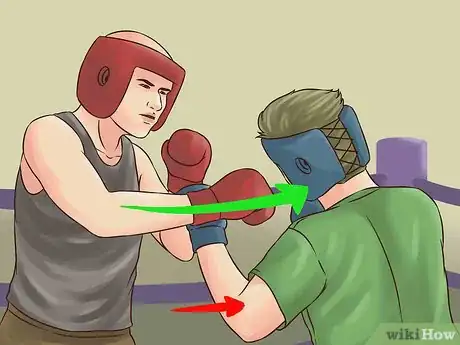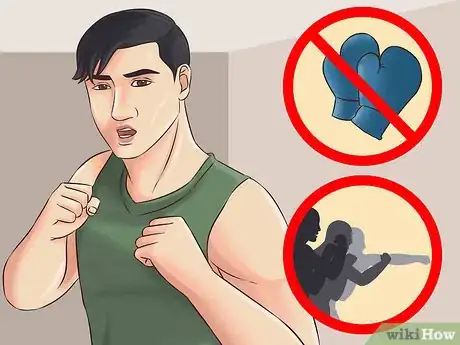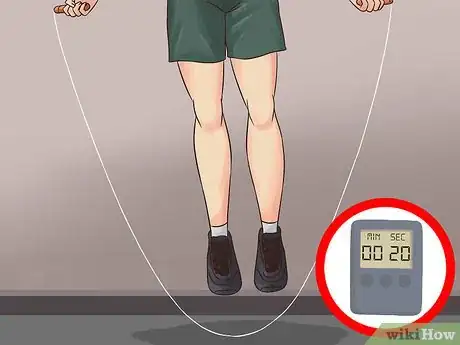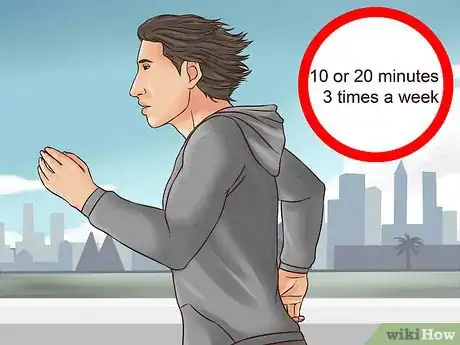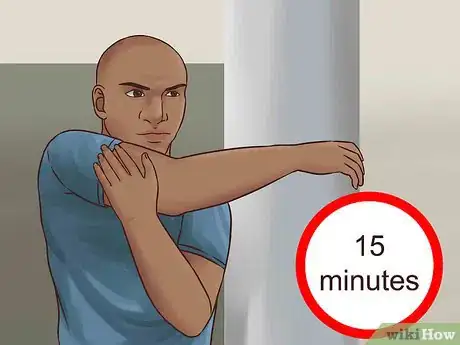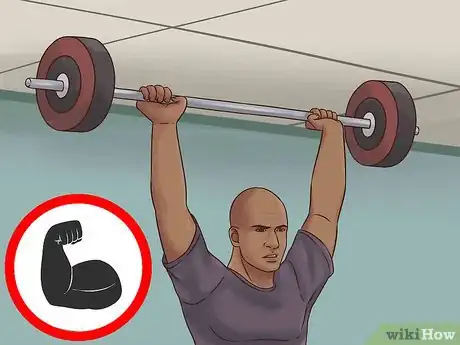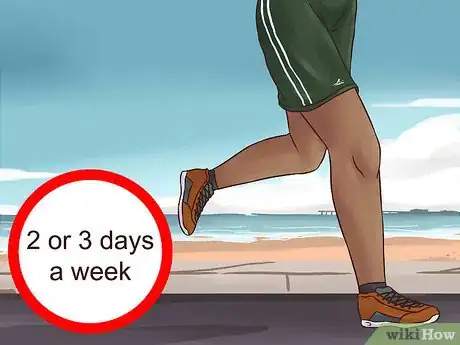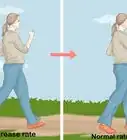This article was co-authored by Joseph Bautista. Joseph Bautista is a Self Defense Specialist and a Martial Arts Instructor specializing in Filipino martial arts. With over 18 years of instructing and martial arts training experience, Joseph runs Legacy Filipino Martial Arts, a Filipino martial arts school based in San Francisco, California. He also teaches self-defense with Self Defense For the People, a self-defense program with clients such as Salesforce, Airbnb, Gap, UPS, and UCSF. When not teaching self defense he is teaching CPR and 1st Aid Skills to 911 Dispatchers and Local Police Officers in the SF Bay Area with 1st Five Minutes.
There are 15 references cited in this article, which can be found at the bottom of the page.
wikiHow marks an article as reader-approved once it receives enough positive feedback. This article received 12 testimonials and 88% of readers who voted found it helpful, earning it our reader-approved status.
This article has been viewed 109,677 times.
Do you want to become a good boxer? Boxers must have a combination of endurance, strength, agility, and speed to excel. Becoming a good boxer requires dedication and hard work. You can train on your own, but joining a gym and training with other boxers can take your skills to the next level.
Steps
Practicing Your Punches
-
1Join boxing classes. Taking boxing classes can help you improve your technique by receiving expert instruction. Check online, your local newspaper, and local gyms to find classes. You can train on your own, but you will become a better boxer if you are being formally trained. Formal training will also help you meet other boxers that you can train with.
- Do your research on the schools that are out there, and see if you can take a class at each facility you're interested in. Then you can determine whether the instructor, atmosphere, and structure are right for you and your own way of doing things.[1]
- For instance, some people prefer to train in a way where they want to get into a ring, and there are schools for those trying to be professional fighters. Other schools are more focused on winning tournaments.[2]
-
2Practice on a punching bag. A heavy punching bag can be used to practice all of your punches. Exhale as you throw each punch and tighten your body and fist as you throw the punch. Always return to your fighting stance after each punch. Always protect yourself with your non-punching hand.[3]
- If you are not a member of a boxing gym, you can purchase a punching bag online or at a sporting goods store.
Advertisement -
3Hit the speed bag. A speed bag will help you with rhythm, timing, hand-eye coordination, and endurance. The speed bag will go back and forth 3 times for every one time you hit it. Hit the bag with your right hand twice and then hit the bag with your left hand twice. Use the front of your fist for your first hit and the bottom of your fist for your second hit.[4]
- Stand directly in front of the bag; not in your boxer's stance. You should also be eye level with the bag.
- Start by practicing a single punch. Complete 3 sets of 10 punches.
-
4Get in boxing stance. In the orthodox boxing stance, your left foot is in the lead. Keep your chin down with your rear hand (usually your right hand) guarding your chin. Your lead hand should be about 6 to 8 inches from your chin, and your elbows should be tucked in. Stand slightly sideways so your entire chest is not facing your opponent. Your knees should be slightly bent, and your feet should be a little wider than shoulder width.
- If you are left handed, you will lead with your right food instead. Your rear hand will be your left hand, and your lead hand will be your right hand. This is called the southpaw stance.
-
5Throw a jab. A jab is the most important punch. It help keep your opponent away from you and sets up your other punches. A jab is a quick punch that you throw with your lead hand. Keep your chin down and protect your chin with your rear hand as you punch. Extend your arm fully and quickly and then bring your arm back to the original stance position.
- You should never lean in or lunge to jab your opponent. If you feel the need to do this, you are not in a good position to throw a jab.
-
6Throw a cross. A cross is a punch thrown with your rear hand and is more powerful than a jab. Guard your chin with your lead hand and then fully extend your rear hand. As you throw your cross, pivot your rear foot so that your heel is up and your toes are still on the ground. Rotate your body counter clockwise as you extend your arm and lean forward just a little bit. Rotate your fist as you punch so that the palm of your hand is facing the floor.
- Bring your hand back to protect your chin after you throw the punch.
- Remember to keep your knees bent so you do not lose your balance.
-
7Throw a hook. A hook is a punch that is used to punch your opponent in the side. You can use your rear or lead hand to throw a hook. Bend your arm to a 90 degree angle and rotate your body in the direction that your punch is going. Pivot your foot as you throw the punch as well and bend your knees. Protect your chin with your opposite hand as you throw a hook.
- If you throw with your lead hand, pivot your lead foot. If you throw with your rear hand, pivot your rear foot.
-
8Throw an uppercut. You will usually throw an uppercut if your opponent puts his or her head too low. This is a power punch that you throw from your waist. You can throw one with your lead or rear hand. To throw with your lead arm, dip your head to the outside of your lead foot, twist your hips, and rotate your body in an upward motion as you throw the punch. An uppercut with your rear hand usually follows a jab by your lead hand.
-
9Throw an overhand punch. Use your rear hand to throw an overhand punch. Arch your rear elbow to a 90-135 degree angle and lean to the outside of your lead foot. Bend your knees as you throw and aim for your opponent's head. Pivot your back foot as you throw this punch as well.[5]
- This punch takes a longer time to reach your opponent than the other punches. Do not wind up too much or your opponent will know what is coming.
-
10Throw combinations. Once you are able to do all five punches, practice throwing combinations. You should practice these punches until they become second nature to you. The more you practice them, the faster and more efficient you will become. You can also begin to string together multiple combinations. The basic combinations are: [6]
- The 1-2 (jab -right cross)
- The 1-1-2 (jab-jab-cross)
- The 1-2-3 (jab-cross-left hook)
- The 1-2-3-2 (jab-cross-hook-cross)
- The 1-2-5-2 (jab-cross-left uppercut-cross)
- The 1-6-3-2 (jab-right uppercut-left hook-right hand)
Working on Your Defensive Skills
-
1Practice getting hit. Getting hit during a fight will take a lot of energy out of you and cause you to become fatigued. When you get tired, it will be harder to keep your hands up. To prepare your body for this, train with 3 or 5 pound weights around your arms and ankles.To prepare for body shots, have someone drop a medicine ball on your stomach while you are doing crunches. The ball should drop in between each repetition.[7]
-
2Move your head. In addition to protecting your head with your fists, you must learn to move your head to avoid getting hit. A good way to move is to practice making letters with your head. Try the following letters:[8]
- "T" - move your head side-to-side and then duck down
- "V" - move your head down and then slip
- "C" - move your head backwards and then around
-
3Spar with another boxer. Sparring is a time for you to have a practice your skills and test your conditioning. Punching bags are fine, but they cannot prepare you to box with an opponent in the ring. Spar with people who are a different size than you and that have different abilities (e.g. faster, more advanced, better jab, slower than you, etc.) Remember that sparring is about practicing and getting better, not beating up your partner.[9]
-
4Interrupt your opponent's punches. When your opponent throws a punch, your first instinct will be to protect yourself. However, you do not have to wait for your opponent to finish throwing punches before you start punching back. Counter your opponent's punches instead of focusing on blocking.[10]
- Always keep your eyes on your opponent as you take a punch and try not to lean back.
-
5Shadow box to practice your skills. Shadow boxing allows to you to visualize different opponents and scenarios.[11] Practice throwing punches, moving your head, and moving your feet. Practice different combinations. Focus on your technique and quickness as you throw your punches as well.[12]
- Do not wear gloves or use weights when you shadow box.
- It is helpful to shadow box in front of a mirror or in front of a trainer so that you can get feedback on your movements.
- You can shadow box for an allotted time period. Try focusing on a specific skill (e.g. uppercut, pivoting your foot) during each round.
Conditioning Your Body
-
1Jump rope to improve your footwork. Jump roping develops your endurance, coordination, agility, quickness, and footwork. Use small wrist rotations instead of your entire arm to swing the rope around. Jump high enough so the rope slides right under your feet. You do not want to jump too high. Your landing is one of the most important parts of your jump roping. Stay on the balls of your feet and keep your knees slightly bent as you land.[13]
- Once you can have mastered basic jump roping, you can try more advanced techniques like jump roping side-to-side and crossing your arms.
- Get a jump rope that is long enough for your body. You should be able to step in the middle of the rope and pull the handles to your shoulder.
- Start by jumping rope for 20 seconds without tripping. Build up your endurance until you can jump rope for 1, 2, or 3 minutes (rounds) without stopping. Take a 30-60 second break between each round.
-
2Jog to increase your endurance. Jogging will build your endurance so that you can last through 12 rounds of boxing. Run at an easy pace where your heart rate does not go higher than 150 beats per minute. Try to run for at least 60 minutes, 5 times a week.[14] If you are unable to run for 60 minutes without stopping, run for shorter periods of time and work your way up. If you have not been jogging regularly, work your way up to 5 times a week as well.
- If you are a beginner, start with running for 10 or 20 minutes, 3 times a week.
- You eventually want to build up to running for 2-3 hours, 5 times a week.[15]
-
3Be flexible to improve your performance. Stretching before and after your workouts will improve flexibility, lower your risk of injuries, and increase your range of motion.[16] Stretch all of the major muscle groups in your body (e.g. legs, arms, chest, shoulders, back, abdominal). Hold each stretch for 30 seconds. Try to stretch for at least 15 minutes every time you stretch.
- Never stretch cold muscles. You can stretch after you warm up (e.g. jump rope or light jog) or after your workout.[17]
- Focus your stretching on areas that you use the most when you are boxing.[18] These include your chest, hip flexors, calves, biceps, and abdominals.
-
4Lift weights to increase strength. Weight lifting can improve your power and speed. Olympic style weightlifting is particularly helpful in your boxing training. Back squats, clean and jerks, dead lifts, and snatches are all great exercises. Lifting should not be done on the same days that you are doing your boxing training. For example, if you are in the boxing ring Monday, Wednesday, and Friday, then you would lift weights on Tuesday and Thursday.
- If you do not want to do Olympic style weightlifting, you can do more traditional exercises. Do exercises for your hips and legs (e.g. lunges, squats, mountain climbers), core (e.g. planks, back extension, etc.), and upper body (e.g. pull ups, push ups, chest press, shoulder press, etc.)
- Avoid strength training the week before your boxing match.
-
5Do interval running. Boxing requires a lot of stopping and starting. Interval training mimics the stopping and starting that your body will go through during a boxing match. Run for 200, 400, 600, or 800 meters as fast as you can, and then rest for 1 minute between each interval.[19] Do interval running 2 or 3 days a week and never on consecutive days.
- For example, do intervals on Monday, Wednesday, and Friday instead of Tuesday, Wednesday, and Thursday.
- Adjust the amount of intervals you are doing based on the length of your fight. If you are training for a 5 round fight, run 6 intervals to prepare.
Warnings
- Don't punch or fight with people simply. Use them when required⧼thumbs_response⧽
- Avoid punching people on sides of their foreheads, noses and chins⧼thumbs_response⧽
Things You'll Need
- Punching bags and gloves
- Boxing classes, if possible
- Videos and movies related to boxing
References
- ↑ Joseph Bautista. Self Defense Specialist, Martial Arts Instructor, & 1st Aid/CPR Instructor. Expert Interview. 30 April 2020.
- ↑ Joseph Bautista. Self Defense Specialist, Martial Arts Instructor, & 1st Aid/CPR Instructor. Expert Interview. 30 April 2020.
- ↑ http://www.expertboxing.com/boxing-basics/how-to-box/the-beginners-guide-to-boxing
- ↑ http://www.expertboxing.com/boxing-training/bag-training/how-to-hit-a-speed-bag
- ↑ https://www.youtube.com/watch?v=Ma4NUE13Vdk
- ↑ http://www.expertboxing.com/boxing-basics/how-to-box/7-basic-boxing-combinations
- ↑ http://breakingmuscle.com/kickboxing-boxing/5-ways-to-improve-your-defense-and-win-more-fights
- ↑ http://breakingmuscle.com/kickboxing-boxing/5-ways-to-improve-your-defense-and-win-more-fights
- ↑ http://breakingmuscle.com/kickboxing-boxing/5-ways-to-improve-your-defense-and-win-more-fights
- ↑ http://www.expertboxing.com/boxing-basics/how-to-box/16-basic-boxing-tips
- ↑ https://www.youtube.com/watch?v=Gl8hF4TbHn8
- ↑ http://www.expertboxing.com/boxing-training/boxing-workouts/guide-to-shadow-boxing
- ↑ https://www.youtube.com/watch?v=wyEXnFeiJAI
- ↑ http://www.wbanews.com/box-medical-articles/why-do-boxers-run
- ↑ http://www.wbanews.com/box-medical-articles/why-do-boxers-run
- ↑ http://www.expertboxing.com/boxing-techniques/body-movement/balance-and-flexibility-underrated-boxing-skills-part-1
- ↑ http://www.mayoclinic.org/healthy-lifestyle/fitness/in-depth/stretching/art-20047931?pg=2
- ↑ http://theboxingclub.net/blog/index.php/best-post-workout-stretching-exercises/
- ↑ http://www.bodybuilding.com/fun/ss11.htm
